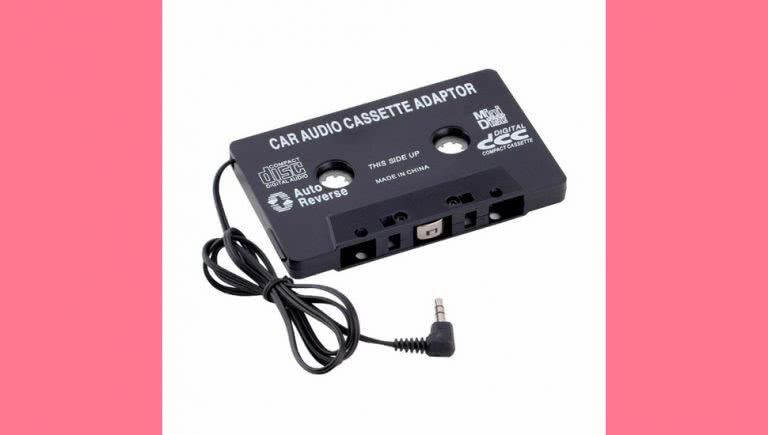Remember that awkward moment when you were still driving a beater of a car, that only had a cassette player, while your friends were rocking out in their aux cord-equipped cars?
Somehow, you had missed out on even graduating to a car boasting a CD player, and were now two generations of audio technology behind. Cassettes hadn’t made a comeback just yet, so your options were flipping through the radio stations until you found something good, or popping in a cassette from the ’80s, and hoping that you didn’t have to perform the pencil rewind trick while driving.
Needless to say, your car’s audio needed a bit of a boost, and you were desperate to crank the tunes you were craving exactly when you wanted them, instead of hoping to catch them on your FM radio.
So, what happened? You picked up this nifty, little tool that turned your cassette player into a handy, dandy aux cord that you could use on your CD player, iPod, and eventual smart phone.
Shaped as a cassette, this clever doohickey quickly brought your car up-to-date, and made it where you could start jamming has hard as your friends had been for years.
So, how does it work? And, how did we all come to magically know this device, and just trust it as our lifeline to music on-the-go?
Originally created by Larry Schotz, the man was a creative genius in the media world, not only inventing the design we so keenly depended on, but also using his ingenuity to create wireless speakers, antennas, and a slew of both audio and video inventions.
Love Indie?
Get the latest Indie news, features, updates and giveaways straight to your inbox Learn more
The way the cassette is able to transfer sound actually lies in using the existing mechanics of a cassette player to transmit electromagnetic signals to convert them to sound.
Rather than having the head of the cassette player relaying noise via a tape, it transmits the signal directly, actually causing a brighter sound without as much “noise” as cassette tapes often feature.
According to his patent, filed in 1986, “when the adapter is loaded into the cassette playback deck and that deck as well as the other device both are operated, signals produced by the other device are coupled, by means of the aforementioned conductor and audio circuit, to the record head from which those signals are applied to the playback head of the cassette playback deck and, thence, those signals are reproduced by the audio system.”
Thanks to this invention, it quickly because the way to upgrade your audio system on the cheap, resulting in many of us being able to jam out for a mere $10, instead of forking out major cash.
And, for those who are still rocking a car with a cassette-only player, these bad boys are still available at JB Hi-Fi for an easy $9.95.
Check out the patent for the cassette to aux cord adapter:




































